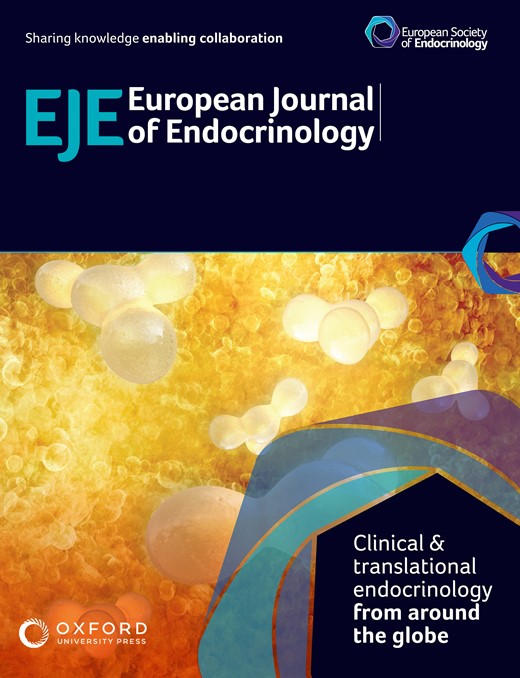-
Views
-
Cite
Cite
Melanie S Haines, Allison Kimball, Erinne Meenaghan, Kate Santoso, Caitlin Colling, Vibha Singhal, Seda Ebrahimi, Suzanne Gleysteen, Marcie Schneider, Lori Ciotti, Perry Belfer, Kamryn T Eddy, Madhusmita Misra, Karen K Miller, Denosumab increases spine bone density in women with anorexia nervosa: a randomized clinical trial, European Journal of Endocrinology, Volume 187, Issue 5, Nov 2022, Pages 697–708, https://doi.org/10.1530/EJE-22-0248
Close - Share Icon Share
Abstract
Anorexia nervosa is complicated by high bone resorption, low bone mineral density (BMD), and increased fracture risk. We investigated whether off-label antiresorptive therapy with denosumab increases BMD in women with anorexia nervosa.
Twelve-month, randomized, double-blind, placebo-controlled study.
Thirty ambulatory women with anorexia nervosa and areal BMD (aBMD) T-score <−1.0 at ≥1 sites were randomized to 12 months of denosumab (60 mg subcutaneously q6 months)(n = 20) or placebo (n = 10). Primary end point was postero-anterior (PA) lumbar spine aBMD by dual-energy x-ray absorptiometry. Secondary end points included femoral neck aBMD, tibia and radius volumetric BMD and bone microarchitecture by high-resolution peripheral quantitative CT, tibia and radius failure load by finite element analysis (FEA), and markers of bone turnover.
Baseline mean (±s.d.) age (29 ± 8 (denosumab) vs 29 ± 7 years (placebo)), BMI (19.0 ± 1.7 vs 18.0 ± 2.0 kg/m2), and aBMD (PA spine Z-score −1.6±1.1 vs −1.7±1.4) were similar between groups. PA lumbar spine aBMD increased in the denosumab vs placebo group over 12 months (P = 0.009). The mean (95% CI) increase in PA lumbar spine aBMD was 5.5 (3.8–7.2)% in the denosumab group and 2.2 (−0.3–4.7)% in the placebo group. The change in femoral neck aBMD was similar between groups. Radial trabecular number increased, radial trabecular separation decreased, and tibial cortical porosity decreased in the denosumab vs placebo group (P ≤ 0.006). Serum C-terminal telopeptide of type I collagen and procollagen type I N-terminal propeptide decreased in the denosumab vs placebo group (P < 0.0001). Denosumab was well tolerated.
Twelve months of antiresorptive therapy with denosumab reduced bone turnover and increased spine aBMD, the skeletal site most severely affected in women with anorexia nervosa.





